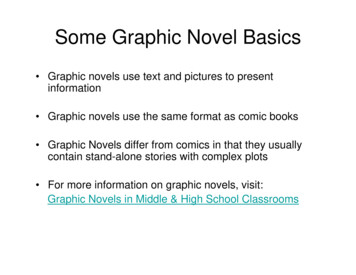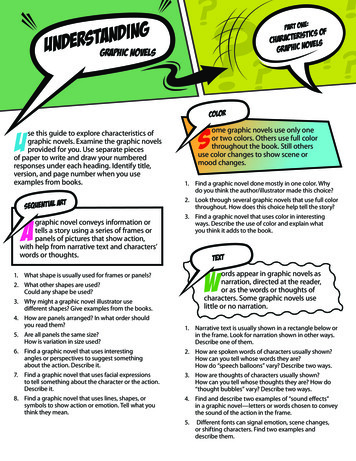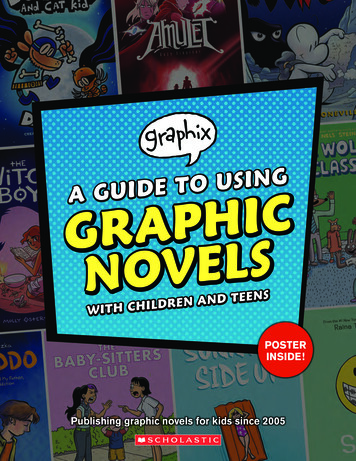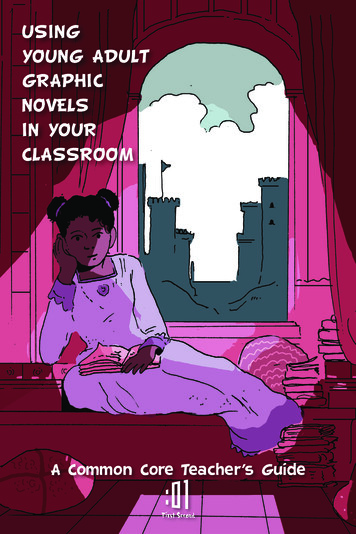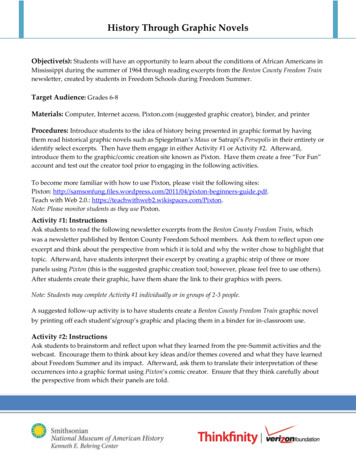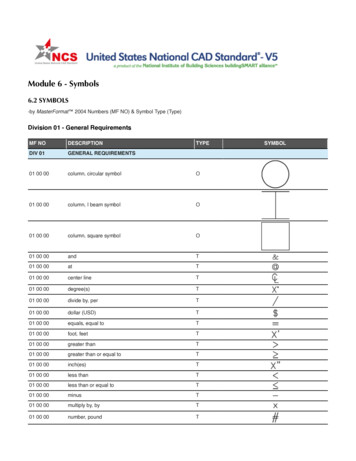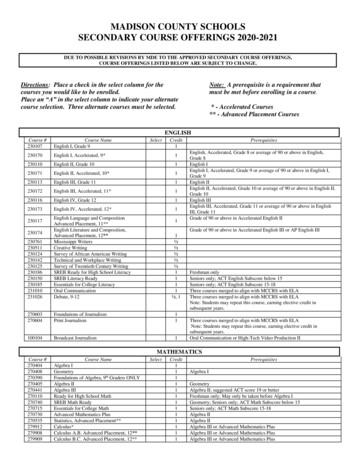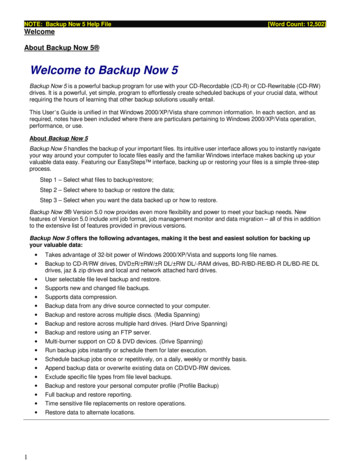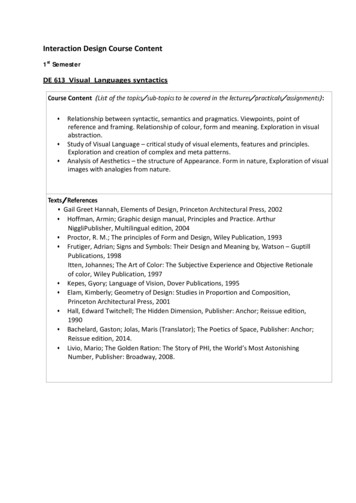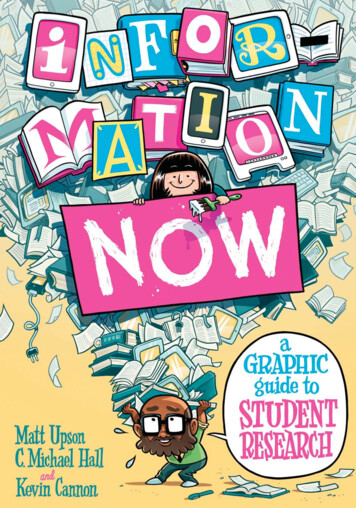
Transcription
InformationNowA Graphic Guide toStudent ResearchMatt Upson,C. Michael Hall,and Kevin CannonTHE UNIVERSITY OF CHICAGO PRESSCHICAGO AND LONDON
Matt Upson is assistant professor and director of libraryundergraduate services at Oklahoma State University.C. Michael Hall is a writer, cartoonist, and public speaker who advocates for comics andgraphic novels in libraries and educational settings and creates visual aids for libraries.Kevin Cannon is the illustrator of numerous educational and fictional graphic texts, includingUnderstanding Rhetoric: A Graphic Guide to Writing and The Cartoon Introduction to Philosophy.The University of Chicago Press, Chicago 60637The University of Chicago Press, Ltd., London 2015 by The University of ChicagoAll rights reserved. Published 2015.Printed in the United States of America24 23 22 21 20 19 18 17 16 15 1 2 3 4 5ISBN-13: 978-0-226-09569-1 (paper)ISBN-13: 978-0-226-26775-3 (e-book)DOI: 10.7208/chicago/9780226267753.001.0001All copyright rights in the Dewey Decimal Classification are owned by OCLC OnlineComputer Library Center, Inc.; The Summaries are used with OCLC’s permission;DDC, Dewey, and Dewey Decimal Classification are registered trademarks/service marks of OCLC Online Computer LIbrary Center, Inc.Library of Congress Cataloging-in-Publication DataUpson, Matt, author.Information now: a Graphic guide to student research / Matt Upson, C. Michael Hall, and KevinCannon.pages cmISBN 978-0-226-09569-1 (pbk.: alk. paper) — ISBN 978-0-226-26775-3 (e-book) 1. Informationliteracy — Comic books, strips, etc.Michael, author.2. Library research — Comic books, strips, etc.II. Cannon, Kevin, author.I. Hall, C.III. Title.ZA3075.U67 2015025.5'24 — dc22015000685This paper meets the requirements of ANSI/NISO Z39.48-1992 (Permanence of Paper).
CO N TEN T SP REFA C EVIIINTRODUCTION:I NFOR M AT I O N O V E R L O A D11THE PROCESS:ST EPS TO F I N D I N G A N D U S IN G T HE RIG HTI NFOR M AT I O N . A N Y T I M E . A N YW HERE.2H O W I N F O R M AT I O N I S O R G A N I Z E D A N D F O U N D :25TH E B A S I C S311S E A R C H I N G A N D L I B R A R Y C ATA L O G S :U ND E R S TA N D I N G T H E H U N T FOR IN F ORM AT ION4J O U R N A L S A N D D ATA B A S E S5SEARCHING THE OPEN WEB6E VA L U AT I N G Y O U R S O U R C E S7U S I N G I N F O R M AT I O N E T H I C A L LY8CONCLUSION106AC KN O W L E DGM E N TSG LOS S A R Y1111095571819039
P R EFACEThis book has pictures, we swear! You just have to get past this enormous one-page chunk oftext before you are rewarded with the ample fruits of your labor. OK, OK, take one quick sneakpeek. Turn the page but come right back.Great. Satisfied? Since we’ve got you here, there are two important items we want toaddress.#1: This book is about information. How to find the right kind, how to use it effectively, howto evaluate it efficiently, etc. As a current or perhaps soon-to-be undergraduate, the information you use—and your understanding of it—is critical to your success as a student and as afuture professional. We want this book to reinvent the way you think about information. Wewant you to be more critical of the information you find and use. We want you to have a betterunderstanding of where the information you use comes from. We want you to be more awareof how to locate the best information for your needs. And we want you to realize that findingthe best information can be hard work, especially now that there is more information beingcreated by more people than ever before in human history. We want you to do a lot of things,but we’re here to help. And when I say “we,” I mean librarians. Obviously we’re a little biasedhere, but librarians are one of the most important resources in your quest for information. Weknow our way around books. That’s been our job for quite a while now. But more importantly,we’re information experts. Books aren’t our only tools; we’re not limited to one medium. Weknow how to find stuff, and, more importantly, we can help you figure out how to find the rightstuff on your own. So, if this book teaches you one thing (hopefully, it will teach you more,but . . .), it’s that your friendly neighborhood librarian can and should be one of your first stopswhen you start researching. OK, enough self-promotion.#2: We decided to make this book a comic because we believe that comics can moreefficiently teach concepts and skills than traditional prose, thanks to their use of engagingcombinations of text and images and appropriate utilization of metaphor and relevant context.Because comics stimulate the parts of your brain that handle visual elements as well as theparts that handle language, they can potentially give your brain more opportunities to connectwith the content than you’d have with a strictly text-based book. Plus, comics are fun to writeand draw and a lot more fun to read than your average textbook.All right, we’ve said enough here. Read the book, learn something new, and enjoy!vii
IN T R O D UCT I ONINFORMATION OVERLOADOh, hi!You look alittle lost.How can Ihelp?Ah, a researchproject, huh? And youdon’t know where tostart? Sure, we canhelp with that!Uh-huh, right, right.OK. So, you’ve searchedonline and were swampedwith resources? Don’tknow what to use?Sounds like weneed to start withthe basics. Let’stalk about 1
Well, I’m glad youasked, because I have a whole lotof answers. Believe it or not, Googlecan be a great resource. So can Wikipedia.in fact, any piece of information has thepotential to be useful, regardless ofwhere you find it So, you’re probably asking yourself,“Why am I in a library? Why can’t I justGoogle anything and everything I needfor this project?” but I’mgetting aheadof myself.Yeah, goodquestion!See, tools like Google andWikipedia are not even close to beingthe only resources you can use forresearch. And they don’t even scratchthe surface of how much informationis out there. And there’s a LOT ofinformation. Too much.2I ntroductionEnough tosweep you off yourfeet if you’re notprepared.Comeon I’llshow you.
Let’s imagine thislittle trickle of waterrepresents all the informationcreated by ancient humans.Not much,huh?A lot of oraltradition, maybe somecave paintings, an inscribedtablet here or there But as the humanpopulation increased and ourforms of communication evolved andspread, the amount of informationproduced grew exponentially. Moreand more people added their own“flow” of information to theincreasingly deep andswift current.in f or m ation o v e r l o a d3
As literacy rates roseand basic education became morecommon, even more information wasproduced. The ability to create andpublish information spread to moreand more of the population aseducation and technologyadvanced.More and more books andarticles were published every year.Mass production allowed for moreaccess, since there were many copiesof items, not just one or a few likethere’d been earlier.And then camethe internet andthe World WideWeb!All of a sudden,potentially anyone and everyonecould post whatever they wanted,whenever they wanted. You can complainabout the person in front of you at thecheckout line to hundreds, even thousandsof people in just a few seconds!it can be overwhelming!Let’s get outof here!4I ntroduction
Whew! Well, now that that’s over, youcan tell how potentially overwhelminginformation can be, especially now.Things changed really quicklyonce the internet and personalcomputing became commonplace.Now billions of people can createand disseminate information inthe blink of eye.But you already know that.You probably sat down at a computerthis morning or used a phone or tabletto post something online, making yourown thoughts available for the worldto see. And guess what?Millions, evenbillions of other internetusers also decided to dothe same thing.This can be great! More people are accessinginformation than ever before,* making usmore informed, intelligent, and responsibleglobal citizens every person with theirown unique voice and an outlet to the world!On the other hand, since anyone can dumptheir information into the flow, we haveto confront an increasing number of viewpoints on an increasing number of topics.*For up-to-date statistics on worldwideinternet usage, see the international Telecommunication Union’s iCT Facts and Figures page ts/default.aspx.Again, that’s not necessarily a bad thing, butit poses a challenge: How do we managethat flow of information and find reliableand useful information for the varietyof tasks we have to accomplish every day?So, that confusion you feelabout what’s the rightresource to use?That’s partof informationoverload.Say, for example, you’re working on anacademic research project. The typeof information you’ll need for thatassignment is going to be completelydifferent than the information you’d needto decide which mobile device to buy.Different kinds of tasks requiredifferent kinds of information anddifferent ways to find that info.in f or m ation o v e r l o a d5
And information overload isn’tjust about the huge number ofpeople creating information eachday. it’s about technology, speed,and access, too.Nowadays, it is incredibly easy for an individual to create and duplicate information.create and duplicate informationcreate and duplicate informationcreate and duplicate informationcreate and duplicate informationWay back in ancient times, students wereforced to use a contraption known asa typewriter, or even—gasp!—writethings out by hand. (they had to knowhow to spell, too.) Creating just onecopy took a lot of work.Way befolabore re that, scribdto create do countless h escuouspending mo ments by h rsntanmeticulously hs, even yea d,wrillustrating a riting and s,ber ofvworks ery small n.Euniqueumand v ach copy w aluablase.The invention of movable type in China inthe eleventh century and in Europe a fewcenturies later allowed for greaterspeed and flexibility when producing printedinformation. And when Johannes Gutenbergdeveloped the printing press in Europein the fifteenth century, the process ofmaking multiple and accurate copies ofdocuments became much easier and faster.I’m settingall kinds ofrecords here!in fact, “easier and faster”could be the motto for informationcreation and duplication over the millennia.it took a long to time to pick up steam,but now that it has, there seems tobe no slowing down.6I ntroduction
There are also moreways to access informationthan there used to be.We used tohave to go to theinformation inmany cases.Now, more thanever, the informationcomes to us.The wide array oftechnology we have atour disposal ensures thatwe’re never more thana few seconds away fromdiscovering something.it can be too much:Too many ways for informationto reach us and not enough ways tofilter out what we don’t want.Managing all of theinformation that we comeacross can be a challengebecause we encounter somuch of it in so manydifferent ways.And the paths to accessare still multiplying. What willbe the next new way to use information?Augmented reality? Wireless internetaccess points in our brains?Sounds like science fiction,sure, but the tools we use everyday would sound like alien technologyto the people of fifty, eventwenty years ago.in f or m ation o v e r l o a d7
The speed and easewith which we cantransmit informationis another factor ininformation overload.I can just throwtogether a quicktext or e-mailand it’s aseasy ascould be.“Hey, Bill,you’ve got atowel on yourhead ”Yeah, thanksfor that Now think about how difficult it was totransfer information back in the day This letter must bedelivered with the utmosthaste! Let nothing hinder theswiftness of your steed, northe fortitude of your spirit!This might be anexaggeration, butyou get the point.information hasn’talways been easyto share Yes,milord! and because of that fact, only themost vital information was shared.“Dude!Pizza 2nite?”Of course, there have been alternatemeans of communicating with relative speedwithout the use of advanced technology. Forexample, the use of smoke signals and carrierpigeons allows for the quick transmissionof information, but that information canbe restricted by the limitations of thecommunication method.Now, how doI order moremarshmallows andhot dogs fromAmazon withthis?Most of the time.8I ntroduction
Since information is no longer difficult totransmit, we don’t worry as much about what we’resending out into the world. Quality, relevance, andreliability aren’t as valued as they used to be,depending on your point of view.Think about all thejunk e-mails you get, all thead blasts that scream outto you from every otherwebsite you visit.Think aboutall the Googlesearches you doand all the irrelevantinformation that yousometimes get alongwith the goodstuff.information isno longer a scarcecommodity. it’s beyondabundant, increasingat a rate that isunfathomable.How do you keep up?How do you know what’s relevantand accurate? How do you even know whatyou don’t know? What information has beenverified by experts as reliable and unbiased?What was concocted by people who have nointerest in providing a truthful look at theworld? What’s there just to make moneyor entertain? How do you decide?Well, beinginformation literate isa way to combat the confusion.Basically, it’s all about understanding how to find, use, create,and share information in a varietyof dynamic scenarios, includingacademic research.in f or m ation o v e r l o a dLet’sdig in.9
C RIT IC A L T H IN K I N G EXERCI SES1. For the exercises in this book, create an online blog, website, Twitter feed (or any other typeof online social media) that you can use to track your understanding of information literacyand the research process. Feel free to answer the questions by using text, images, video,sound, or any other approach, BUT be sure to use outside information ethically. (I knowwe haven’t covered that yet, but for now, just be sure to let us know if you use informationcreated by someone else and show us where you got it. When in doubt, LINK.) This can beformal or informal, but you should really focus on answering the questions honestly andthinking about your own understanding and experience finding and using information.2. Have you ever experienced information overload when searching for information? Wereyou unable to make a decision because there was too much information or the information was inconsistent or conflicted? If so, think about and describe how you got into thatmess in the first place. What kind of information were you looking for? How much timedid you spend trying to find what you needed? Were you eventually successful, or did yougive up and throw your computer in the trash? Can you think of any strategies you couldhave used to avoid the problem?3. Is information overload a common problem for you, or are you confident in your ability tofind and manage information?4. If you are confident in your skills, explain why. Practice? Instinct? Luck? What makes yoursearch skills so great? If you’re not confident, how could you fix that?10
graphic novels in libraries and educational settings and creates visual aids for libraries. Kevin Cannon is the illustrator of numerous educational and fictional graphic texts, including Understanding Rhetoric: A Graphic Gui
